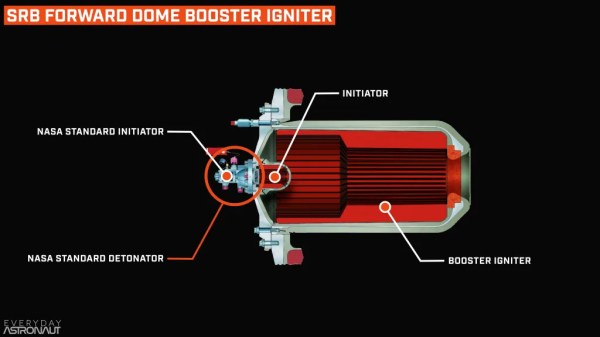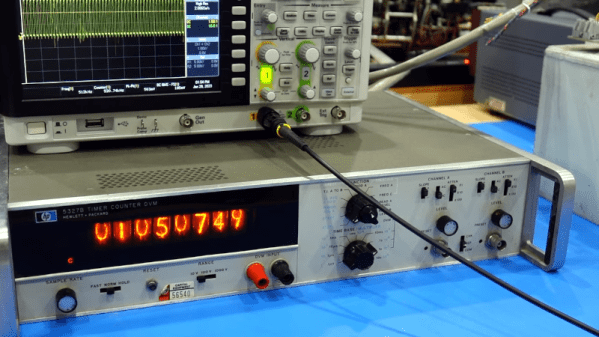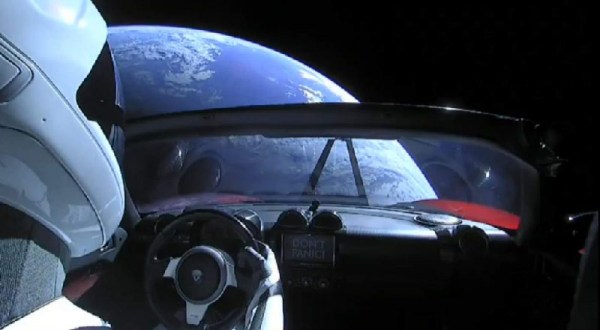Rockets are conceptually rather simple: you put the pointy bit upwards and make sure that the bit that will go flamey points downwards before starting the engine(s). Yet how to start each rocket engine type in a way that’s both safe and effective? Unlike in the Wile E. Coyote cartoons, real-life rocket engines do not have a fuse you light up before dashing off to a safe distance. Rather they use increasingly more complicated methods, which depend on the engine type and fuels used. In a recent article written by [Trevor Sesnic] with accompanying video featuring everyone’s favorite Everyday Astronaut [Tim Dodd], we’re taken through the intricacies of how flamey ends are made. Continue reading “The Intricacies Of Starting A Rocket Engine”
Space665 Articles
Virgin Orbit Pauses Operations, Seeks Funding
It looks as though things may have gone from bad to worse at Virgin Orbit, the satellite carrying spin-off of Richard Branson’s space tourism company Virgin Galactic. After a disappointing launch failure earlier in the year, CNBC is now reporting the company will halt operations and furlough most employees for at least a week as it seeks new funding.
It’s no secret that company has struggled to find its footing since it was formed in 2017. On paper, it was an obvious venture — Virgin Galactic already had the White Knight Two carrier aircraft and put plenty of R&D into air-launched rockets, it would simply be a matter of swapping the crewed SpaceShipTwo vehicle for the LauncherOne orbital booster. But upgrades to the rocket eventually made it too large for the existing carrier aircraft, so the company instead purchased a Boeing 747 and modified it to lift their two-stage rocket out of the thick lower atmosphere. Continue reading “Virgin Orbit Pauses Operations, Seeks Funding”
The International Space Station Is Always Up There
Thanks to its high orbital inclination, the International Space Station (ISS) eventually passes over most inhabited parts of the Earth. Like other artificial satellites, though, it’s typically only visible overhead during passes at sunrise and sunset. If you’d like to have an idea of where it is beyond the times that it’s directly visible, take a look at this tabletop ISS tracking system created by [dpelgrift].
![]() The tracker uses an Adafruit Feather inside its enclosure along with a Featherwing ESP32 WiFi co-processor. Together they direct a 3D printed rocket-shaped pointing device up and down by way of a SG90 micro-servo, while a 28BYJ-48 stepper motor provides rotation.
The tracker uses an Adafruit Feather inside its enclosure along with a Featherwing ESP32 WiFi co-processor. Together they direct a 3D printed rocket-shaped pointing device up and down by way of a SG90 micro-servo, while a 28BYJ-48 stepper motor provides rotation.
This setup allows it to take in all of the information required to calculate the Station’s current position. The device uses the current latitude and longitude, as well as its compass heading, and combines that with data pulled off the net to calculate which direction it should be pointing.
While it might seem like a novelty or programming challenge, this project could be useful for plenty of people who just want to keep track so they know when to run outside and see the Station pass by, or even by those who use the radio repeater aboard the ISS. The repeater on the ISS and plenty of other satellites are available to amateur radio operators for long-distance VHF and UHF communication like we’ve seen in projects like these.
The Nixie Clock From Outer Space
Nixie clocks are nothing new. But [CuriousMarc] has one with a unique pedigree: the Apollo Program. While restoring the Apollo’s Central Timing Equipment box, [Marc] decided to throw together a nixie-based clock. The avionics unit in question sent timing pulses and a mission elapsed time signal to the rest of the spacecraft. Oddly enough, while it had an internal oscillator, it was only used during failures. It normally synched to the guidance computer’s onboard clock.
There is a detailed explanation of the unit, along with some of the ancillary equipment and panels. Much of what the output from the unit is driving counters to display timers, although some of the clocks drive other pieces of equipment, like the telemetry commutator, which time stamps each telemetry frame.
Hunting For Space Pirates
Ever since the first artificial satellite was launched into orbit, radio operators around the world have been tuning in to their space-based transmissions. Sputnik 1 only sent back pulses of radio waves, but in the decades to follow ever more advanced radio satellites were put into service that could support two-way communications from Earth to space and back again.
Some of these early satellites were somewhat lacking in security, though, and have been re-purposed by various pirates around the world for their own ends. [Gabe] aka [saveitforparts] is here to show us how to hunt for those pirates and listen in on their radio traffic.
Pirates on these satellites have typically used them for illicit activities, and it is still illegal to use them for non-governmental or non-military purposes, so [Gabe] notes that he will only be receiving, not transmitting. The signals he is tuning in to are VHF transmissions, specifically around 220 MHz. That puts them easily within the reach of the RTL-SDR and common ham radio equipment, but since they are coming from space a more directional antenna is needed. [Gabe] quickly builds a Yagi antenna from scrap, tuned specifically to 255 MHz, and mounts it to an old remote-controlled security camera mount which allows him to point it exactly at the satellite and monitor transmissions.
From there he is able to pick up what looks like a few encrypted and/or digital transmissions, plus analog transmissions of likely pirates speaking a language he guesses to be Portuguese. He also hears what he thinks is a foreign TV broadcast, but oddly enough turns out to be NPR. These aren’t the only signals in space to tune to, either. There are plenty of purpose-built ham radio satellites available for any licensed person to use, and we’ve also seen this other RTL-SDR configured to snoop on Starlink signals.
Virgin Orbit’s First UK Launch Attempt: What Went Wrong
A month ago there was disappointment as Virgin Orbit’s first attempt at a space launch from the United Kingdom using its converted Boeing 747 airliner platform failed to achieve orbit. Now with the benefit of a lot of telemetry analysis the company have released their findings, which conclude that a fuel filter within the second stage became dislodged. The resulting fuel starvation was enough to cause the engine to receive insufficient cooling and overheat, bringing the mission to a premature end.
As we said at the time, the interesting part of the launch, midair from the 747, appears to have gone flawlessly. Space exploration is hard, and we are confident that they’ll fix any fuel filter mounting issues on future launches and be placing payloads in orbit for their customers soon afterwards. The whole program has seen significant news coverage in the UK where the craft has its base, and those of us in that environ will no doubt see it portrayed locally as a matter of national pride. The truth however will be that it flies on the talents of engineers from all corners of the world. We’ll be watching out next time, and look forward to a successful mission.
Header: Österreichisches Weltraum Forum, CC BY-SA 4.0.
Five Years On, Where Is Starman And Where Will He Go?
On 6 February 2018, a Tesla Roadster was launched as the mass simulator on the first ever Falcon Heavy launch — putting for the first time ever a car on a Mars-crossing orbit. While undoubtedly a bit of a stunt, the onboard cameras provided an amazing view of our planet Earth as the Starman dummy in the Roadster slowly drifted away from that blue marble, presumably never to be seen again.
This “never” is the point that researchers at the University of Toronto would like to clarify in a paper published after the launch titled The Random Walk of Cars and Their Collision Probabilities with Planets. Using N-body simulations, they come to the conclusion that there’s a 22%, 12%, and 12% chance of the Roadster impacting the Earth, Venus, and the Sun, respectively. But don’t get too excited, it’s not due to happen for a few million years, so it isn’t something any of us will be around to see.
As the Where Is Starman? website shows, the Roadster never reached escape velocity from the Sun’s gravity, meaning that it’s still zipping around in an orbit around our day star. Exposed to the harsh UV and other radiation, it’s likely that very little is left at this point of the Tesla, or Starman himself. Even so, scientists to this day are feeling less than amused by what they see as essentially littering, adding to the discarded rocket stages, dead satellites and other debris that occasionally makes it into the news when it smashes into the Moon, or threatens the ISS.
















